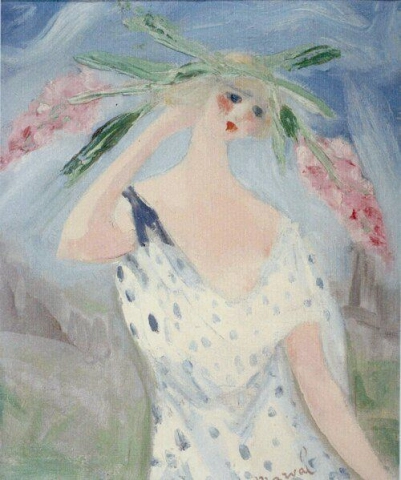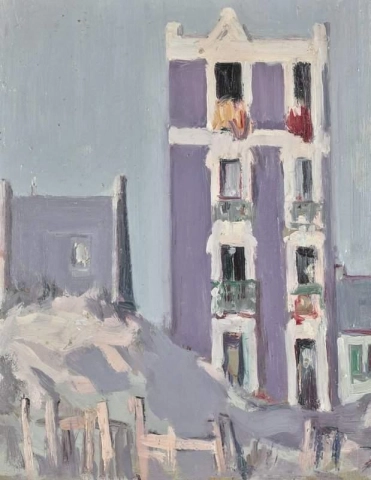Hand-painted painting reproductions - Movements - Fauvism
Imagine owning a museum-worthy piece of art, created by the greatest artists in history and reproduced by passionate and experienced painters. At POD, we offer you the opportunity to make that dream a reality. We reproduce the works of art of your favorite painters from the Fauvism art movement in the smallest details, so that you can enjoy them in your own home.
Our reproductions are made by experienced artists who use the best materials and techniques. We are committed to providing you with works of art of the highest quality, which will bring joy and inspiration to your family for generations to come.
Fauvism: The Explosion of Color and Expression
Fauvism was an early 20th-century art movement known for its bold, vibrant colors and expressive brushwork. Emerging in France around 1905, it was the first modern movement to break away from traditional representation, paving the way for later abstract styles. The Fauves (French for "wild beasts") used pure, non-naturalistic colors to create emotional impact rather than realistic depictions.
Early Origins and Development
Fauvism was born from Post-Impressionism and Neo-Impressionism, with influences from Van Gogh, Paul Gauguin, and Georges Seurat. Led by Henri Matisse and André Derain, the Fauves rejected academic precision in favor of spontaneous, expressive color application.
The movement made its official debut at the 1905 Salon d’Automne in Paris, where critics were shocked by the raw intensity of color. A critic, Louis Vauxcelles, famously referred to the artists as "wild beasts" (Fauves), a name that stuck. Although short-lived, Fauvism revolutionized modern art, inspiring movements like Expressionism and Abstract Art.
Characteristics and Techniques
Fauvism is characterized by its vivid, unrestrained use of color and simplified forms. Key features include:
- Bold, Pure Colors – Fauvist painters applied color straight from the tube, creating striking contrasts.
- Expressive Brushstrokes – Loose, energetic strokes conveyed emotion rather than precision.
- Simplified Forms – Details were reduced to essential shapes, focusing on the overall impression.
- Distorted Perspective – Fauves often flattened space and used unrealistic proportions.
- Autonomous Color – Color was used independently of reality, allowing for emotional expression rather than natural representation.
Unlike Impressionism, which sought to capture light and atmosphere, Fauvism prioritized personal expression and emotional intensity.
Themes and Significance
Fauvism's radical approach to color and form led to a new era of artistic freedom. Common themes include:
- Landscapes and Seascapes – Often depicted with exaggerated, unnatural hues.
- Portraits and Figures – Emphasizing psychological depth through color rather than realism.
- Everyday Scenes – Transformed through bold compositions and vibrant contrasts.
- Emotional Expression – Conveying joy, excitement, and energy through color alone.
Fauvism’s significance lies in its liberation of color from reality, a principle that would influence Expressionism, Cubism, and Modern Abstraction.
Notable Artists and Their Influence
Several key figures shaped Fauvism, each bringing a distinctive approach to the movement:
- Henri Matisse (1869–1954) – The leader of Fauvism, known for his expressive color palettes and fluid compositions (Woman with a Hat, 1905).
- André Derain (1880–1954) – A pioneer of Fauvist landscapes, applying bold complementary colors (London Bridge, 1906).
- Maurice de Vlaminck (1876–1958) – Used thick, impasto strokes to create explosive color contrasts (The River Seine at Chatou, 1906).
- Raoul Dufy (1877–1953) – Known for light-filled, lyrical Fauvist scenes (Boats at Martigues, 1907).
- Georges Braque (1882–1963) – Briefly a Fauvist before co-founding Cubism, incorporating Fauvist color principles into his later work.
These artists inspired future generations, influencing German Expressionism, Abstract Art, and Color Field Painting.
Legacy and Modern Appeal
Though Fauvism lasted only a few years (1905–1910), its bold use of color forever changed modern art. It marked a turning point where expression and emotion took precedence over realistic representation. Today, Fauvist works are celebrated for their joyful energy and revolutionary approach to color.
Fauvist masterpieces can be found in major institutions like The Museum of Modern Art (MoMA), the Tate Modern, and the Centre Pompidou, ensuring the movement's lasting impact.
Where to Find Reproductions of Fauvist Art
For collectors and enthusiasts, POD (Painting On Demand) offers high-quality reproductions of Fauvist masterpieces. These vibrant works bring the joy and energy of Fauvism into contemporary spaces, making them a perfect addition to any art collection.

















